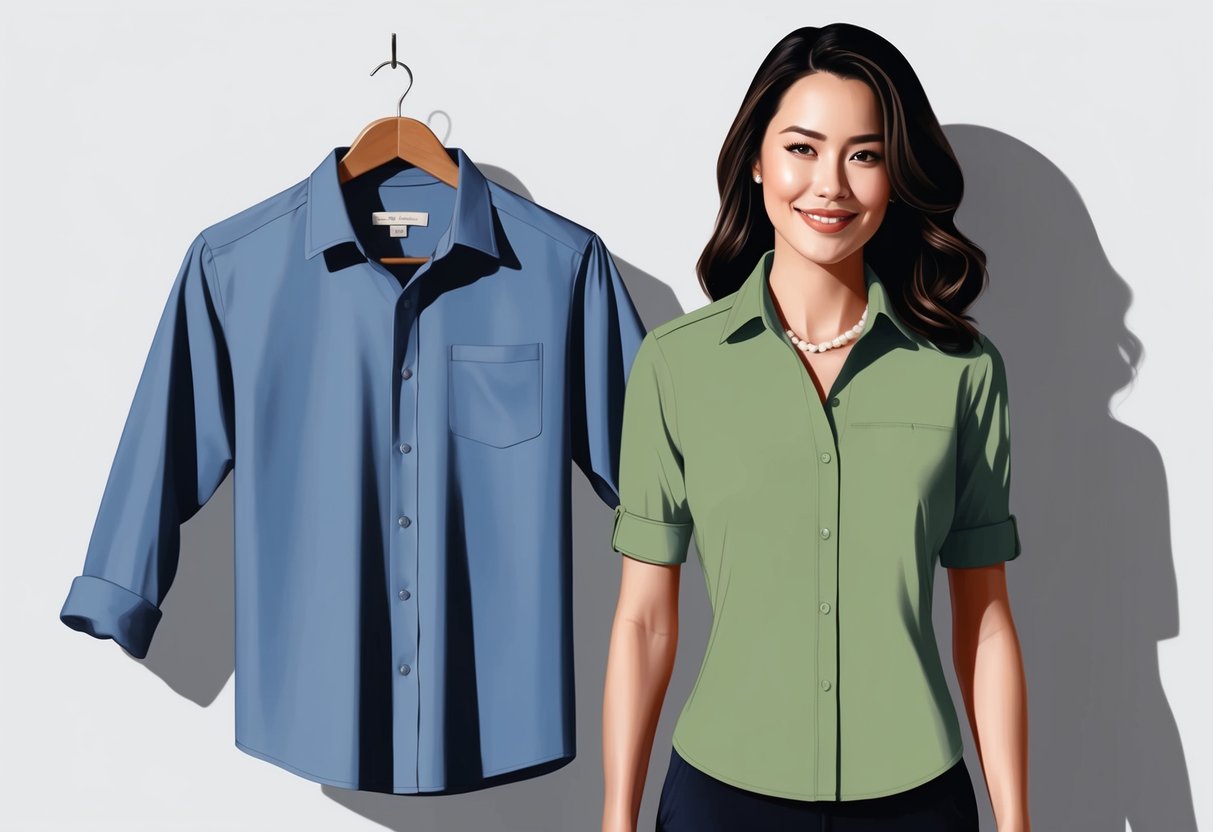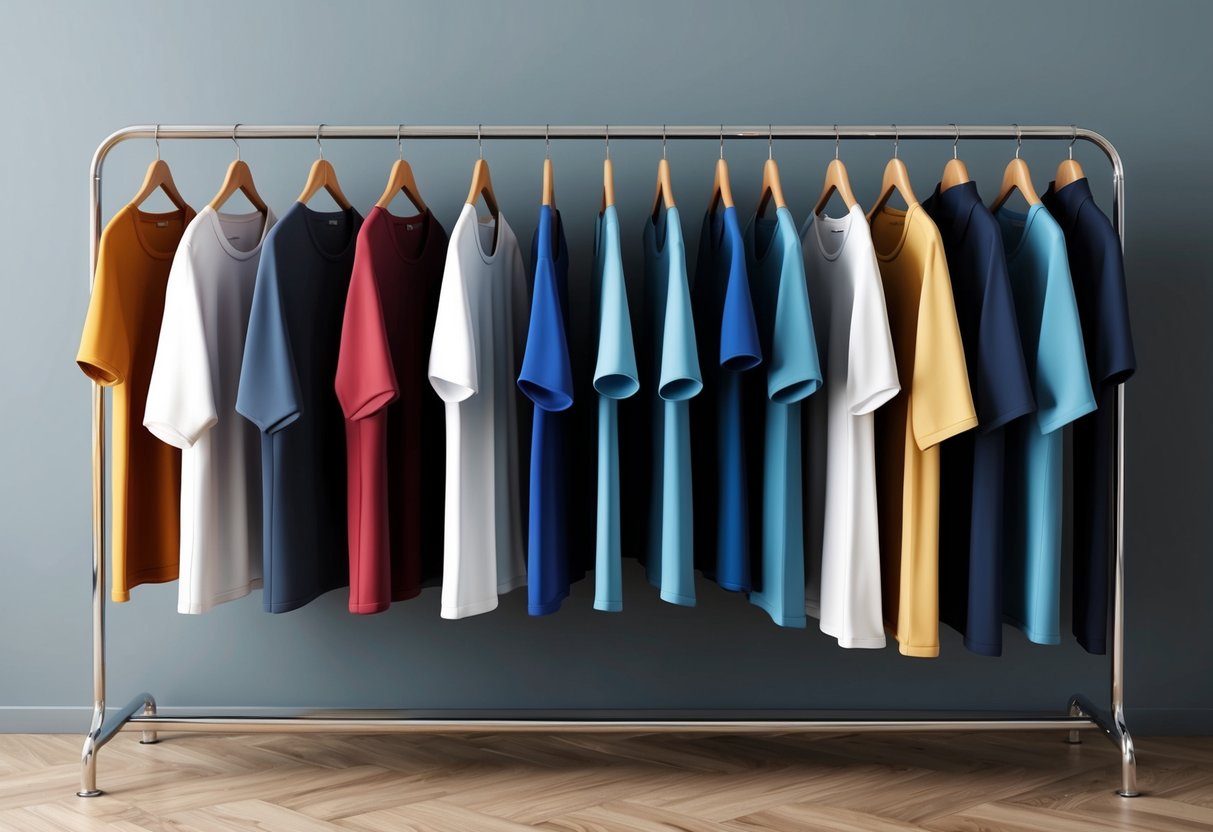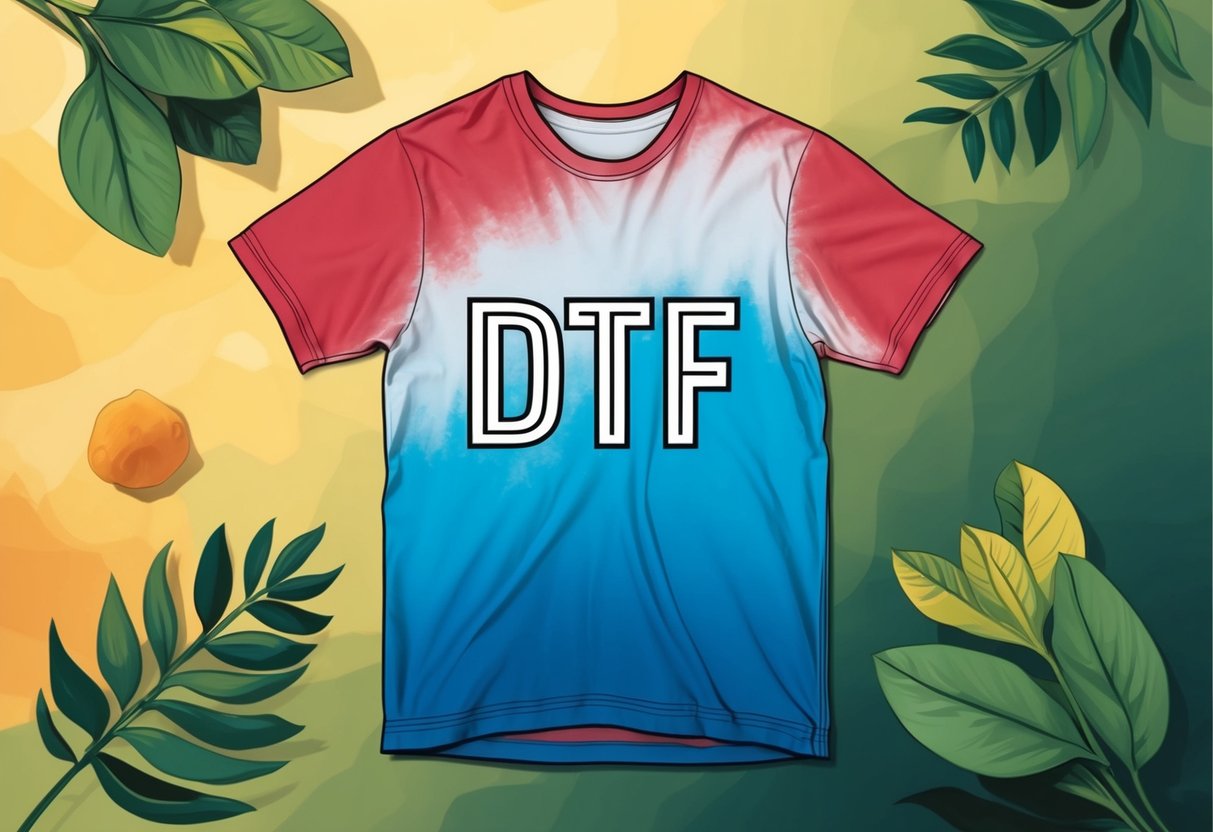Figuring out clothing sizes can often be a puzzle, but it’s manageable with the right guidance. If you’re wondering what a men’s medium converts to in women’s sizes, start by considering the general difference in sizing.
A men’s medium typically equates to a women’s large.

This conversion provides a foundation to guide you in selecting the right fit when shopping across gender lines. While different brands might have small variations, this typical conversion helps you make an informed choice.
Table of contents
Exploring size charts and knowing some simple tricks can make shopping much easier.
Understanding Clothing Sizes

Sizing systems have evolved to help people find clothes that fit well. Knowing how these systems work can assist you in making better clothing choices, particularly when converting between different sizing standards.
History of Sizing Systems
The concept of standardized clothing sizes began in the early 20th century. Before this time, clothing was usually custom-made.
World War I drove the need for quick and efficient production, leading to the development of sizing systems based on measurements collected from soldiers.
These early systems often used body measurements like chest, waist, and inseam for men’s clothing. However, there was little consistency across different brands and countries. You may still find differences in sizing from one brand to another, a legacy of these early efforts.
Modern Sizing Systems
Today’s sizing systems aim for more uniformity but still differ by region and brand.
In the United States, men’s sizes are often measured by chest size in inches. For example, a men’s medium typically correlates to a chest measurement of 38-40 inches.
Women’s sizes can vary more, with numbers like 6, 8, and 10 or designations like small, medium, and large. European size systems often use a numbering system based on centimeters.
Understanding how these systems work, and which one a brand uses can help you find clothing that fits comfortably. This is especially true for shoppers moving between men’s and women’s clothing sizes.
Your familiarity with these sizing differences can make shopping less frustrating and more successful.
Size Chart Essentials

Understanding size charts can help you choose the right clothing fit whether you’re buying locally or internationally. You’ll learn how to interpret size charts and recognize international variations, aiding in smoother size conversions.
Interpreting Size Charts
Size charts usually list measurements in inches or centimeters.
Chest, waist, and hip measurements are the most common. Make sure to check if the chart is specifically for men, women, or unisex sizes.
Pro tip: When between sizes, check if the brand suggests sizing up for a relaxed fit or down for a snug fit. Most brands provide guidelines on this, helping you choose what works best for your style preference.
It’s crucial to fill the gaps with your body measurements rather than just relying on standard sizes.
International Sizing Variations
International sizing can be complicated due to differences in measuring systems.
For instance, a U.S. size 8 may translate to a U.K. size 10 or an EU size 38. Familiarize yourself with a basic conversion chart to navigate these differences effectively.
Key tip: Always double-check if the online store provides a specific size conversion chart. This additional information can prevent errors in picking the right size.
Many online retailers post comprehensive charts because an accurate fit enhances customer satisfaction.
Some conversion examples include:
- Shoe Sizes: Women’s U.S. size 9 typically equates to men’s U.S. size 7.5.
- Clothing: Men’s medium often lines up with women’s large or XL, but verify with brand-specific charts to account for variances.
Men’s to Women’s Size Conversion

When converting men’s sizes to women’s, there is a specific way to adjust the measurements. It’s important to remember that men’s and women’s clothing sizes are based on different systems, which means a men’s medium won’t always directly match a specific women’s size.
Men’s Medium to Women’s Sizes
A men’s medium clothing size often translates to a women’s large. This conversion is based on general sizing trends where men’s sizes tend to be about one size smaller in label than women’s sizes.
For example, if you wear a men’s medium shirt, the equivalent is usually a women’s large.
Keep in mind, the fit may vary between brands and styles, so it’s always a good idea to try items on if possible. Men’s shoes also convert differently from women’s shoes, usually requiring an addition of 1.5 to the men’s size to find the women’s equivalent.
Key Differences in Fit and Cut
Men’s and women’s clothing not only differ in size labels but also in fit and cut.
Men’s clothes are typically cut straighter, with broader shoulders and longer sleeves, reflecting male body proportions. In contrast, women’s clothing often emphasizes curves, with narrower waists and wider hips.
You should also consider fabric stretch and style, as these can affect how a garment fits. Women’s clothes may feature more darts or seams to shape around the bust or waist, and they may be made from softer, more flexible materials.
Understanding these differences can help you select the right size and style for your needs.
Measuring for Accurate Sizing

To ensure the right fit when converting men’s medium to women’s sizes, you need precise measurements. Using a measuring tape and knowing which points to measure are key to achieving the best fit.
Using a Measuring Tape
A measuring tape is essential for getting accurate clothing sizes. It’s flexible, allowing you to measure curves around the body.
To start, make sure it is flat and parallel to the floor for the most accurate readings.
When measuring, two important areas are the chest and waist. This gives you the information needed to find the right size, whether it’s for shirts, pants, or jackets.
Hold the tape snug but not tight to avoid inaccurate results.
For the inseam, measure from the crotch down to the ankle. This helps determine the proper length for pants. Keep the tape straight or have someone help you to ensure it is accurate.
Having these measurements ready can make shopping much easier.
Critical Measurement Points
Key spots to measure for getting the right size include the chest, waist, and inseam.
Chest measurement: Wrap the measuring tape around the fullest part of your chest, under the arms. This will give the size needed for tops and jackets. Make sure no slack affects the measurement.
Waist size: Measure around the narrowest part of your waist. Keep the tape parallel to the floor. This size is crucial for both pants and skirts.
Finally, measure the inseam from the crotch of pants down to the desired length around the ankle. This is mainly used for pants sizing and ensures the length fits well with shoes.
Accurate measuring of these points ensures better-fitting clothes.
Size 0 and Size 00 Explained

Sizes 0 and 00 are often used in women’s fashion to represent some of the smallest sizes available in ready-to-wear clothing. These sizes can be confusing, but understanding the differences can help you find the perfect fit.
What Do Size 0 and Size 00 Mean?
Size 0 is typically one of the smallest sizes in the women’s clothing range. It often corresponds to a waist measurement of around 25 inches and a hip measurement of about 35 inches. This size is commonly used in American fashion sizing for petite frames.
Size 00 is even smaller. It may correspond to a waist measurement closer to 24 inches. This size offers a slightly snugger fit compared to Size 0, catering to those with very petite frames.
Understanding these sizes helps you select the right clothing, especially if you shop across different brands, as sizing can vary.
Always check the brand’s size chart, as measurements can differ between labels.
Comparative Overview
When comparing Size 0 and Size 00, think of them as a step apart in measurements. Size 00 is smaller and is intended for those with a more petite frame. The waist of Size 00 is typically an inch smaller than Size 0.
Both sizes are part of the American sizing system aimed at smaller body types. Some brands might also use Size 00 as a specialty size for specific collections or designs.
Keep in mind: Some brands may vary slightly in how they define these sizes, so using a measuring tape to check your measurements against a particular brand’s size chart is helpful. Categories of petite clothing may also include these sizes for shorter body lengths.
Shoe Size Considerations

When buying shoes, you must pay attention to size differences between men’s and women’s footwear. Knowing how to convert sizes helps ensure a good fit.
Men’s vs. Women’s Shoe Sizes
Men’s and women’s shoe sizes differ mainly in length and width. Typically, women’s shoes are about 1.5 sizes larger than men’s shoes.
For instance, a men’s size 8 usually converts to a women’s size 9.5. Width is also an important factor. Men’s shoes are generally wider than women’s, even for the same length.
When converting shoe sizes, always check the specific brand’s sizing chart. Some brands have unique sizing systems.
This can help you find the best fit for your comfort and style.
Remember, the right size reduces discomfort and prevents potential foot problems.
How Footwear Sizing Works
Footwear sizing is based on measurements of your foot’s length and width. In the US, shoe size numbers indicate the foot’s length.
For men and women, sizes generally increase by increments of one-third inch.
Some international sizes differ. For example, European sizes use a different scale.
Using a conversion chart can simplify the process of finding your correct shoe size across different systems.
Pay attention to the materials and design of the shoe. Certain materials stretch differently, affecting fit over time.
If you’re buying online, consider reading reviews that mention size accuracy. This extra step can help ensure you make the right choice.
Frequently Asked Questions

When converting men’s medium clothing sizes to women’s, consider differences in measurements. This often involves numerical adjustments and understanding fit.
How does men’s medium translate to women’s sizes?
A men’s medium shirt may translate to a women’s large or extra large. Check specific brand size charts for accuracy, as sizing varies across brands.
What is the equivalent of a women’s size for a men’s medium shirt?
Typically, a men’s medium shirt aligns with a women’s large. Always compare measurements, like chest and waist, to ensure a good fit.
How to convert men’s medium pants size to women’s?
A men’s medium in pants often converts to a women’s size 10 or 12. Factors like waistband and hip measurements are key for accuracy.
What size is a men’s medium in women’s jeans?
In jeans, a men’s medium might correspond to a women’s size 30 or 31. Pay attention to cut and style, as these affect the overall fit.
Are men’s large sizes equivalent to women’s XL?
Yes, a men’s large is often similar to a women’s XL. Remember, this can differ based on brand and clothing type.
How can I find my size in women’s if I wear a medium in men’s?
To find your size in women’s clothes, use conversion charts and measure yourself. Then, compare your measurements with those on women’s size charts for the best match.



